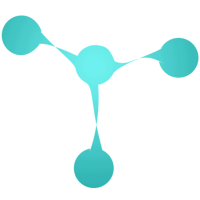
Hanson's Sophia will be an interactive social robot that can work in therapy, customer care and teaching. Hanson believes Sophia will be the first step towards creating superintelligent robots. If this happens, it will mark a major breakthrough in robotics as well as humanoid-robot research. In the meantime, the Sophia robotics machine is a slick and cute novelty item, and we can expect it to keep getting better.
Little Sophia
This robot offers many wonderful features for children. It is 14 inches long and designed to be safe for children aged seven to 13. It can imitate Sophia's facial expressions, sing stories, and tell nerdy factoids. It also supports A.I. home assistant capabilities and augmented reality tech. Children can use her to help with school projects. Little Sophia hopes that more children will love to interact with it.
Hanson Robotics is made up of engineers, scientists, character developers, and toy designers. Little Sophia is an educational robot that has been developed using AI research and development. Little Sophia has over 20 facial expressions and can track faces. It is an excellent educational toy. Little Sophia was also created to encourage STEM education. The company hopes that Little Sophia will encourage children to explore STEM careers.

Robots for the humanoid.
A Hong Kong engineering company, Hanson Robotics, is preparing to mass produce humanoid robots for hospitals and doctors. They created Sophia last year, which quickly gained worldwide attention after its debut. According to Hanson Robotics, Sophia-like robots will be able to do everything from monitor body temperatures to lead people through aerobic exercises. Sophia is expected to be on the market in 2017.
Since its inception, the company has concentrated its efforts on building robots that are human-like. MIRA Labs, Geneva, Switzerland, developed the first robot, Alice. It was developed to communicate emotions and act as a cognitive assistant in cognitive robotics research. Hanson Robotics has been a founding member the INDIGO Consortium for cognitive robotics. Hanson Robotics also developed HUBO, a humanoid robot that can imitate the voice of Albert Einstein. The robotics company hopes that four models will be in production by 2021.
Dr. David Hanson
David Hanson is an inventor with a impressive resume. He holds a Ph.D. from RISD in interactive arts, and a BFA degree from RISD. He has been an exhibitor at the Tokyo Modern and Reina Sofia museums, as well as the Cooper Hewitt Design Triennial. He has been awarded numerous awards and collaborated extensively with artists. His robot, Sophia, is a living example of Hanson's work.
Hanson explains that Sophia's artificial intelligence, advanced aesthetics, and human-like personality are what Hanson hopes to make the robot more humanlike. He believes that although the robot is far from perfect, it will become more human-like over time. Sophia could eventually be used as a therapy robot and for educational assignments. Hanson sees in the robot a step towards developing "superintelligent", intelligent machines that can think and act like humans.

Amazon's Alexa
Sophia, a humanoid robotic assistance, has been used as a marketing tool to transform the world. It was featured in a romantic encounter by Will Smith and on The Tonight Show. In Saudi Arabia, she was granted citizenship. She is not often mentioned in serious AI debates. Her name is synonymous with blockchain conferences. A phenomenon that seems to growing in popularity.
Sophia, the company behind Sophia, has teamed up with Singularity Studios in order to create an open-source blockchain which will allow it to feed other AI modules with a compensation. The technology will be used to feed Sophia information from other services. The company hopes eventually to sell millions upon millions of Graces. Amazon and others are looking to use the technology to aid the elderly.
FAQ
Where did AI get its start?
Artificial intelligence began in 1950 when Alan Turing suggested a test for intelligent machines. He suggested that machines would be considered intelligent if they could fool people into believing they were speaking to another human.
John McCarthy, who later wrote an essay entitled "Can Machines Thought?" on this topic, took up the idea. John McCarthy published an essay entitled "Can Machines Think?" in 1956. He described the difficulties faced by AI researchers and offered some solutions.
Which industries use AI the most?
The automotive sector is among the first to adopt AI. BMW AG employs AI to diagnose problems with cars, Ford Motor Company uses AI develop self-driving automobiles, and General Motors utilizes AI to power autonomous vehicles.
Other AI industries include banking and insurance, healthcare, retail, telecommunications and transportation, as well as utilities.
What is the future of AI?
The future of artificial intelligence (AI) lies not in building machines that are smarter than us but rather in creating systems that learn from experience and improve themselves over time.
In other words, we need to build machines that learn how to learn.
This would mean developing algorithms that could teach each other by example.
Also, we should consider designing our own learning algorithms.
You must ensure they can adapt to any situation.
Who invented AI and why?
Alan Turing
Turing was created in 1912. His father, a clergyman, was his mother, a nurse. He was an excellent student at maths, but he fell apart after being rejected from Cambridge University. He took up chess and won several tournaments. After World War II, he was employed at Bletchley Park in Britain, where he cracked German codes.
He died on April 5, 1954.
John McCarthy
McCarthy was born in 1928. Before joining MIT, he studied mathematics at Princeton University. There he developed the LISP programming language. By 1957 he had created the foundations of modern AI.
He died in 2011.
Statistics
- The company's AI team trained an image recognition model to 85 percent accuracy using billions of public Instagram photos tagged with hashtags. (builtin.com)
- Additionally, keeping in mind the current crisis, the AI is designed in a manner where it reduces the carbon footprint by 20-40%. (analyticsinsight.net)
- A 2021 Pew Research survey revealed that 37 percent of respondents who are more concerned than excited about AI had concerns including job loss, privacy, and AI's potential to “surpass human skills.” (builtin.com)
- That's as many of us that have been in that AI space would say, it's about 70 or 80 percent of the work. (finra.org)
- According to the company's website, more than 800 financial firms use AlphaSense, including some Fortune 500 corporations. (builtin.com)
External Links
How To
How to set Cortana up daily briefing
Cortana can be used as a digital assistant in Windows 10. It is designed to help users find answers quickly, keep them informed, and get things done across their devices.
A daily briefing can be set up to help you make your life easier and provide useful information at all times. This information could include news, weather reports, stock prices and traffic reports. You can choose what information you want to receive and how often.
To access Cortana, press Win + I and select "Cortana." Select Daily briefings under "Settings", then scroll down until it appears as an option to enable/disable the daily briefing feature.
If you have the daily briefing feature enabled, here's how it can be customized:
1. Open Cortana.
2. Scroll down to section "My Day".
3. Click the arrow near "Customize My Day."
4. You can choose which type of information that you wish to receive every day.
5. Change the frequency of the updates.
6. Add or remove items to your list.
7. You can save the changes.
8. Close the app